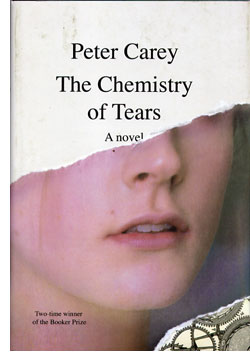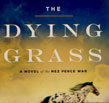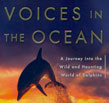 |
 |
 Peter Carey
Peter Carey
The Chemistry of Tears
Alfred A. Knopf / Random House
US First Edition Hardcover
ISBN 978-0-307-59271-2
Publication Date: 05-15-2012
232 Pages; $26
Date Reviewed: 06-17-2012
Reviewed by: Rick Kleffel © 2012
Index:
General Fiction
Science Fiction
In present-day London, Catherine Gehrig's secret life ends without her knowledge; her co-worker at the Swinburne Museum and lover, Matthew Tindall, has died, and no-one has thought to tell her. She cannot even grieve openly. In June of 1854, Henry Branding has left his home in London and finally made it to Germany, with the goal of bringing back a mechanical duck, built by a Black Forest clockmaker, to his ailing son. It is his only hope to instill a sense of joy in his family that will bring them all back to full, loving life. Catherine is a horologist, who specializes in bringing antique clocks back to life. Henry, mad with grief, is paying to create a work of art that will simulate life. But our hearts are not machines.
Peter Carey's 'The Chemistry of Tears' is no machine either, in spite of its fascination with internal and external clockworks. Weaving together stories of intense personal revelation and fairy-tale explorations of the human heart, 'The Chemistry of Tears' manages to infuse that elusive spark of art, of life, into story. Carey's prose and his sparse, smart storytelling skill are able to peer directly into the core of what makes us both human and vulnerable. His characters come to life as they confront death, and we, his readers, are immersed in pure story and the purely human lives that we lead, outside of this story and our own stories. Carey deftly pricks us and lets us watch ourselves bleed, word by word.
For all the fierce intensity that he manages here, 'The Chemistry of Tears' is a quick and easily read novel. The cast, divided over two time streams is small. In the present, Catherine Gehrig mourns the absent-but-present Matthew with the help of her understanding supervisor, Eric Croft. He gives her an assignment that will help her take her mind off her grief, to re-construct a clockwork automaton from the mid-nineteenth century; the creature built-to-order for Henry Branding. The chapters alternate between her story and his papers, which she extracts from the crates in which the mechanism is packed. We see the machinery as it is built the first time and re-constructed in the present. Tragic human beauty unfolds its wings twice before our reading eyes.
Catherine's chapters are tense and intense, as she tries to look at the sun that was once her life, without blinding herself. Her grief has to be entirely internalized; she can speak to but one person, Eric, her boss, who knew about her feelings, and even then, only with some trepidation. The stark loneliness of her choice — she was in the affair for thirteen years, has left her entirely isolated and not entirely well. But she's a smart woman with a fascinating career, and as she begins to put together Henry's story, and his automaton, the fire burns brightly but does not consume her. Here the prose is unadorned, the raw stuff of pain, and Carey plunges us into an interior as the mind and heart collide.
Henry's chapters are written in the stiff manner of a down-on-his-luck Victorian gentleman, telling us more than he can allow himself to write plainly. His first son had died, and with him, his marriage. When his wife gives birth to a second son who also falls ill, she detaches herself, and essentially casts him out, sends him to Germany. There he finds a world that we read as part fairy tale. In these sections, Carey's prose transforms reality into an otherworldly fantasia, dominated by a Herr Stumper, a clockmaker who exercises an iron will to create the being that Catherine is re-creating in the present. The only magic involved is the alchemy of the writer.
Whipsawing back and forth between these perspectives, Carey draws us deeply into the very un-clockwork-like nature of the human heart. Catherine becomes increasingly unstable and unprofessional; Henry's despair grows closer and closer to madness. Soon, the story is so intense that we are getting chapters that combine the perspectives, as Catherine relates in rushed, furious strokes, Henry's story. The creature in the crate, the being in the forest, both slowly, beautifully come to life.
Carey's masterful prose, his careful characters, and his intricate, organic plot grip us with the fever of every life in the novel. Catherine is reading Henry's narrative, as are we, and as we read hers. The power of the reading experience, as explored in 'The Chemistry of Tears,' is magnified by the self-awareness of the characters and our own awareness of the fragility of our lives. The threads that hold us together are easily torn asunder. But it is also true that life can spring from language, that in reading a story, we experience not just the lives of the characters we read about, but our own lives as well. If there's a bit of science in the fiction of Peter Carey, it is the science of the human heart.
|
 |
|
|
 |
| |
Review Archive
All Reviews alphabetized by author.
General Fiction
Non-Genre, general fiction and literature.
Horror
Supernatural fiction, supernatural horror and non-supernatural horror.
Science Fiction
Science fiction, science fantasy, speculative fiction, alternate history.
Fantasy
Fantasy, surrealism and magic realism.
Mystery
Crime, thrillers, mystery, suspense.
Non-Fiction
Non-Fiction, True Crime, Forteana, Reference.
Poetry
|
|
 |
|




